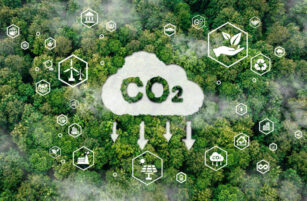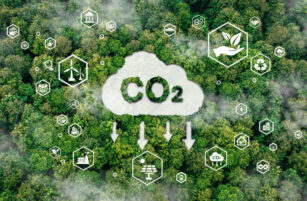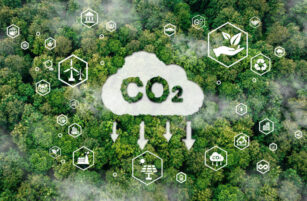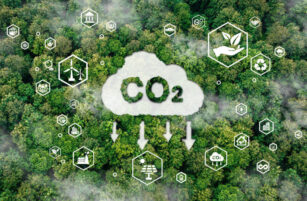Insight Focus
Although carbon prices have bottomed out at as low as EUR 50/tonne in recent months, analysts expect a swift price increase from 2026. This is because additional EUA supply in the short term will be drawn out of future allowances, ultimately leading to an extremely tight market.
Carbon Prices Expected to Rise
European carbon prices are expected to start a sustained move higher over the coming 18 months as traders anticipate a steady tightening of permit supply, according to a veteran analyst.
With a short-term “front-loading” of supply due to come to an end in 2026, and this creating a deeper deficit in the remaining years to 2030, EUA prices are likely to jump sharply.
EUAs have slumped from as much as EUR 100/tonne little over a year ago to as low as EUR 50/tonne in February this year, as sharply lower power generation from fossil fuel sources combined with a drop in industrial output across the region.

Source: ICE
The European Commission’s annual calculation of market supply is expected to show an increase in the surplus for 2023 when it is published next month, and this will be exacerbated by the injection of more than 250 million additional EU Allowances between 2023 and 2026 to help fund the bloc’s Recovery and Resilience Facility. This program is raising more than EUR 200 billion to fund a shift away from Russian fossil fuels and toward cleaner energy sources.
The additional EUAs, being sold under the REPowerEU initiative, are intended to raise EUR 20 billion, and when the initiative was launched last summer, the Commission targeted a sales price of EUR 75/tonne.
However, the daily auction price that governs how much is raised by REPowerEU, has fallen from an average of more than EUR 80/tonne last summer to just under EUR 64/tonne this month. This means that in order to raise the EUR 20 billion, the Commission will need to inject even more EUAs into the market.
So far, REPowerEU has sold some 62 million EUAs, but at current prices it would need to sell a further 240 million permits to reach the EUR 20 billion target, and this calculation is helping to depress the market.

Extra Supply in 2024 Draws Out 2026 EUAs
But analysts at SparkChange, which operates an exchange-trade certificate that invests in physical EUAs (rather than future contracts), believe prices are set to begin to rise significantly from later this year.
“Over the next couple of years we do see the available supply significantly below emission scenarios,” Philipp Ruf, head of analytics at SparkChange, told a webinar last week.
“Emissions will continue decreasing significantly and quickly especially in the power sector, but we can already see [allowance] supplies even cut faster,” he added.
Ruf said that supply would fall below demand as soon as 2026, and by 2029 and 2030 the market stability reserve is likely not to withdraw any surplus from the market. With the maritime sector entering the market from this year, and ship owners not receiving any free allowances, as well as airlines losing all their free allocation of EUAs by 2026, demand is expected to rise quickly.
Ruf highlighted the importance of annual balances, in which the supply of EUAs each year matches up against the demand from installations and operators each year.
“In the past, the market has largely been short,” Ruf explained, acknowledging at the same time that the historic surplus dating back to as far as 2013 has so far cushioned the market. “Now that length has been significantly reduced. And we do see how quickly the deficit is about to pick up. This year we expect, even in a high emissions scenario, that the market will be long.”
However, he cautioned that in the coming years, the pendulum will swing sharply. “In 2026 and 2027 we see that, independent of the emissions scenario, the market is short. The market will have fewer allowances on a yearly basis coming to the market, so that by 2027 the shortfall may reach levels seen only in 2022.”
Ruf estimated that by 2027 the annual deficit could reach the equivalent of a full year’s supply of EUAs, eating into any available historical surplus and driving prices significantly higher.









